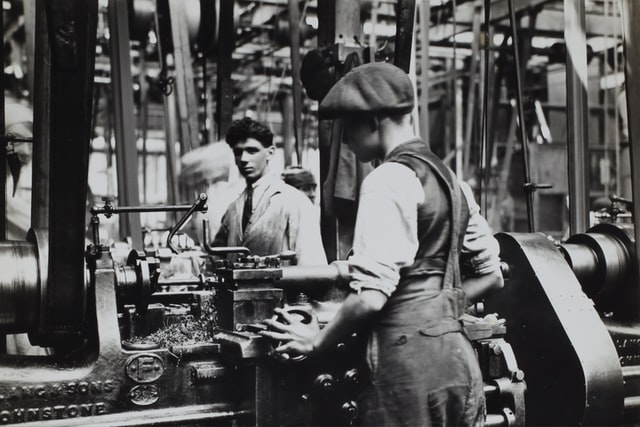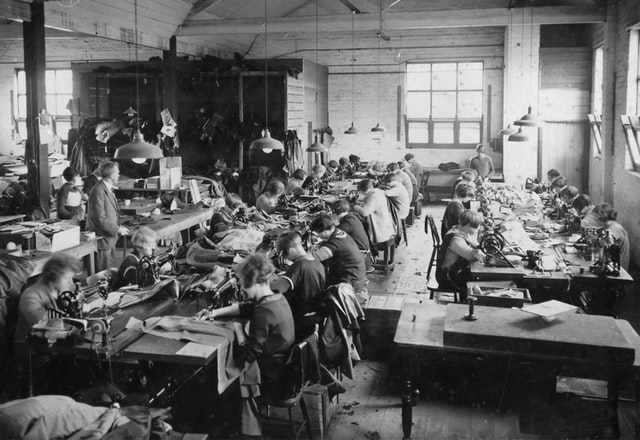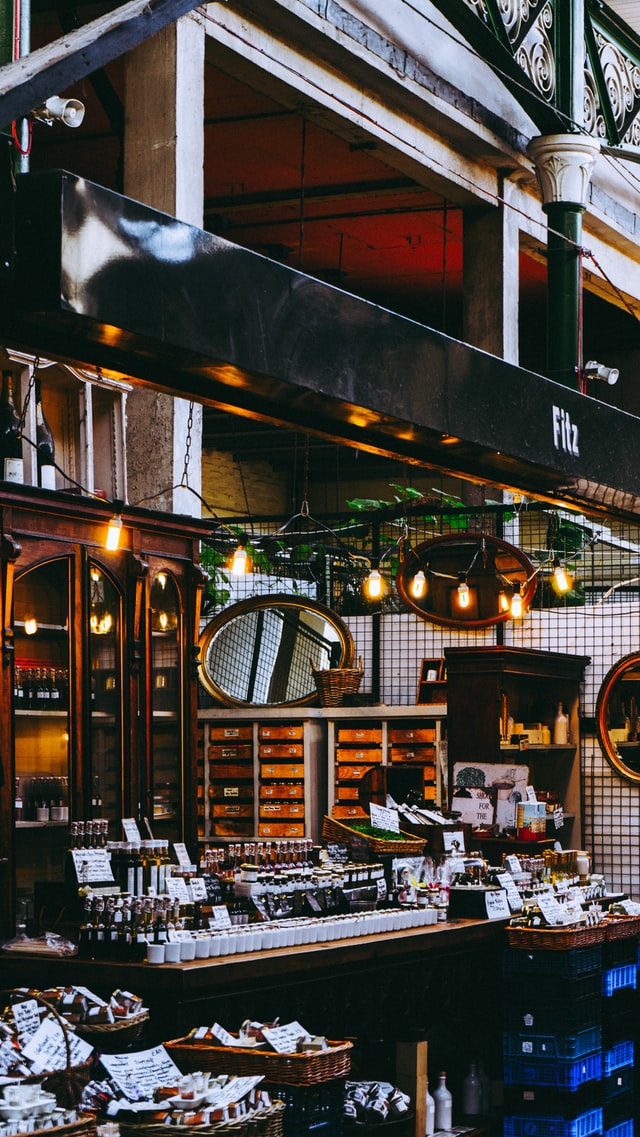4 Differences Between Industrial Vs Handcrafted Goods (2021)
Oct 06, 2021 | Angelo Echave
 In this day and age, the consumption of goods has been constantly increasing and businesses have responded with mass productions. In simple explanations, many customers have a massive desire for a product. So a business would produce that product in massive quantities at the lowest possible cost.
This can be achieved through many different methods. We can replace the physical workforce with automated machinery or factories. Finding a cheaper alternative to reduce transportation costs or acquisition of raw materials.
But what does this mean for handcrafted goods such as chairs, spoons or knitted scarfs?
In this day and age, the consumption of goods has been constantly increasing and businesses have responded with mass productions. In simple explanations, many customers have a massive desire for a product. So a business would produce that product in massive quantities at the lowest possible cost.
This can be achieved through many different methods. We can replace the physical workforce with automated machinery or factories. Finding a cheaper alternative to reduce transportation costs or acquisition of raw materials.
But what does this mean for handcrafted goods such as chairs, spoons or knitted scarfs? In the past, and to this day, these products have been produced by hand. However, factories have made it easier and streamlined the ease of production. So is there really no place for handicrafts?
Let’s explore four comparison points that I consider to be very important and the key differences between industrial and handcrafted goods.
Before we do, let’s go through a piece of history known as the industrial revolution.

To simplify our understanding of the Industrial Revolution, it is a period of development in the latter half of the 18th-century that transformed largely rural, agrarian societies in Europe and America into industrialized urban ones.
With the introduction of the iconic steam power, the first Industrial Revolution has changed the nature of production for many industries. Many goods were produced by hand; professions such as spinners, weavers and dyers.
Thanks to these changes, handcrafted goods were able to be produced in mass quantities. Alongside steam power, the Industrial Revolution brought along new machines and techniques in textiles, iron making and other industries.
However, this has disrupted the artisans. Many artisans would have chosen to escape busy cities to move to the countryside. Thus creating communities such as the Arts & Crafts movement.
So even during the Industrial Revolution, there has always been a preference for either industrially made or handmade products. So where do both kinds sit in the modern age and what are the key differences between the two?
Here are the 4 key differences between industrial and handcrafted goods:
Production difference
With the history set in stone, let’s see the modern effects of the Industrial Revolution. What can we say about the grand benefit of industrial goods against handcrafted goods?
We believe that it stems from the concepts of scalability.
To mass-produce at the same level as machines, handicrafters would need to employ many different artisans. These artisans would not strictly be the same as even if they may have the same skills in the same industry, they may still be using different approaches for the same product.
On the other hand, machines can be the same. They can produce the same products with near perfection as one another. Furthermore, factories do not require to employ the same amount as artisans.
But let’s review the scales between machines and handmade from a cost perspective.
1) Cost of production

To keep the topic simple, we will look at production cost as the cost incurred by a business when they manufacture a product or provide a service. In this case, what is the cost of producing artisan products by industrial means or handmade?
As I previously stated, factories do not have to employ as many artisans as they need with machines. Thus, the business does not have a production cost equal to the need of paying larger labour.
With machines, the business only needs a few elements to start its mass production. To create an output, they need input such as raw materials. Once the input is in process, the machines do not need additional tools, breaks or human interactions. They will just produce.
Due to this, the cost of production would fall for certain categories such as energy cost, storage and maintenance. Definitely, a cheaper alternative than employing hundreds of artisans.
Besides the physical cost of production, there is also the opportunity cost which I will here talk about.
2) Timeliness of production
Similar to the cost of production, we consider the opportunity cost as the forgone benefit that would have been derived by an option not chosen. In hindsight, the benefit of producing a product industrially seems to outweigh the need to produce a product by hand.
Through a basic concept, every business has a goal that they wish to achieve. In most cases, a business aims to make as much profit as possible. This is achievable by either reducing the cost of their production or capturing the current market situation.
We have explored the cost of production, but what about the current market situation?
If there is a sudden 50% increase in the demand for silver cutlery, that is 50% more market interest that a business would like to capture. In order to capture it, the business needs to be ready and capable to mass-produce.
It is just not possible for handicraft artisans to match the sudden increase in demand without losing a portion of the market to a competitor.
So far, it may seem like there is no reason to have handcrafted goods over industrial kind. However, handmade products have a story behind them, which starts with the artisans who make them.
3) Handcraft Lifestyle

While the industrial revolution has advanced society in a favourable way, many artisans wondered what was the future for their craft. As factories found cheaper and faster methods of mass-producing, where was the value for handcrafted goods?
In Zimbabwe, the artisan Taurai Manhare found that the metal art industry is infested by parasitic middlemen. These men would be creating more money than the crafters, despite the fact that they did not have the crafting skills.
This kind of situation needs to be challenged!
These artisans have a passion for honing their craft and appreciate the recognition of the hard work they have put into their art. Behind every handcrafted product, there is a story of the artisan and the product itself.
As Manhare has phrased it, “Every artwork that a client wants, I use my skills to come up with a template, make shapes, and create the artwork to the satisfaction of the client.”
Artisans will give themselves all the time they need to either match or surpass the expectation of the client. This passion increases the value for the clients and reduces the chance of potential defective artwork.
Just as every handcrafted art has a story, they also have a sustainable side to them.
4) Sustainability of handcrafts
As factories continue to mass-produce, how many of these products are recycled or reused? In fact, we should consider the amount of energy used to produce a product industrially or by hand.
For Manhare’s work, he explained that he buys scrapes from accident damaged vehicles and used drums. He would repurpose the metal into a piece of art like an animal statue or anything a client has requested.
In Asian countries, manufacturing and construction generate an average of 25% of CO2 emissions. The Institute of Sustainable Communities plans to tackle this by checking air pollution, toxic effluents, water mismanagement and energy inefficiencies.
Alongside the mass-produced products of an assembly line, these factories would also create by-products such as gas emissions or defective products. Understandably, producing handmade products may generate these by-products as well but it would not be at the same degree.
Therefore, handmade products do have an edge when it comes to having sustainable production. It takes longer for handicraft artisans to produce the product, but it has the payoff for being more environmentally sustainable.
What is left to say about the differences between industrial and handcrafted goods?
Let’s discuss which one is good for which situation.
The final comparison
As it stands, industrially made products have a place to match the versatility of a change in market demand.
As for handcrafted goods, they are placed among businesses or customers who want to be unique and environmentally friendly.
As simple as it can get, the world has a need for both kinds. For sure, not every foot would fit every shoe. However, every individual is different so while there is a place for both kinds, we need to understand the person who would buy and use these products.

If you have an interest in the handcrafted side of these products, I would recommend speaking to businesses such as Rural Handmade.
Here at Rural Handmade, our goal is to challenge the western perception of the economical, social and environmental aspects of handicrafts in developing countries. We aim to give these artisans the fair pay and recognition they deserve by matching them with the right clients.
Come visit our website and have a chat with us.
Contact us at support@ruralhandmade.com.
We look forward to hearing your thoughts on the matter and whether you wish to support these handicrafters in developing countries.
Recommended








